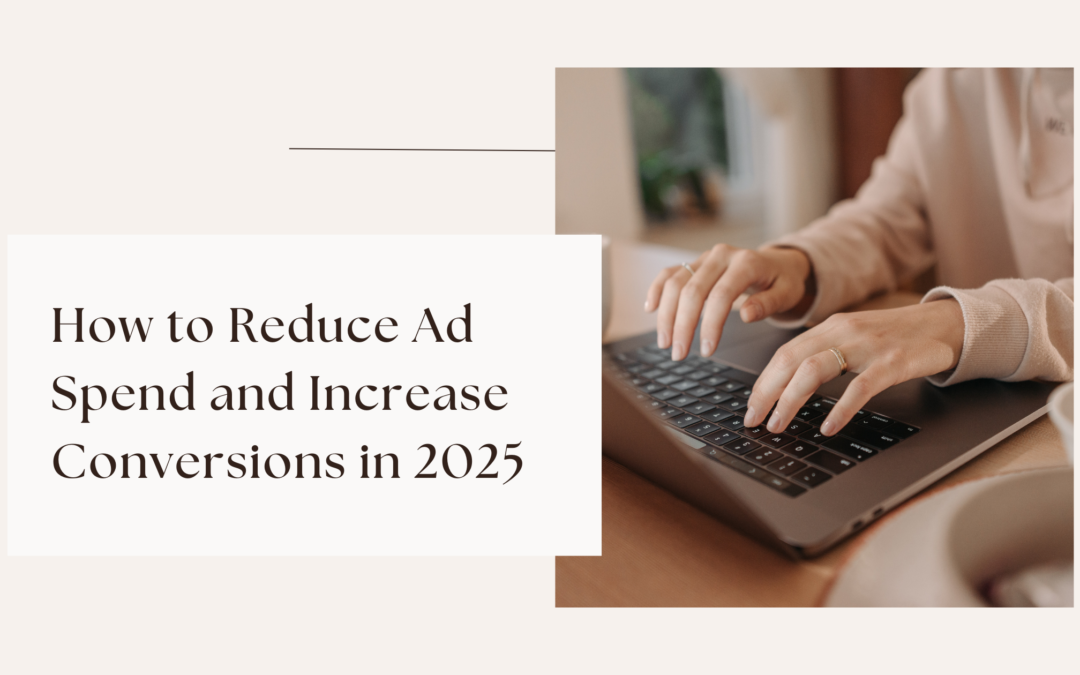Digital advertising costs are rising, and businesses are under pressure to maximize their return on investment (ROI). The key to success in 2025 is not just cutting ad spend but optimizing campaigns to drive higher conversions efficiently. Here’s how you can achieve both.
1. Leverage AI and Automation for Smarter Bidding
Artificial Intelligence (AI) and automation tools can analyze vast amounts of data and optimize bids in real time, ensuring you get the most value from your ad spend. Use:
- Google’s Smart Bidding to automatically adjust bids based on likelihood of conversion.
- Meta’s Advantage+ Campaigns for AI-driven audience targeting and ad placements.
- Third-party AI tools like Adzooma and Madgicx to fine-tune your PPC strategy.
2. Optimize Audience Targeting
Refining your audience targeting ensures you’re spending money only on users who are likely to convert. Consider:
- Lookalike Audiences: Create custom audiences based on your best-performing customers.
- Behavioral Targeting: Focus on users who have engaged with your website, email campaigns, or social media.
- Negative Audiences: Exclude irrelevant users (e.g., past buyers who won’t repurchase soon).
3. Prioritize High-Intent Keywords
For paid search campaigns, focus on high-intent keywords that signal purchase readiness. Use:
- Long-tail keywords: They have lower competition and higher conversion rates.
- Branded keywords: To capture leads closer to conversion.
- Negative keywords: To filter out unqualified traffic and avoid wasted spend.
4. Improve Ad Creative and Copy
Better ad creative leads to higher engagement and lower cost per click (CPC). Optimize:
- Headlines and CTAs: Test multiple versions to find what resonates best.
- Ad formats: Use carousel ads, video ads, and interactive content to improve engagement.
- Personalization: Dynamic ads that tailor messaging based on user behavior.
5. Utilize Retargeting and Remarketing
Retargeting brings back visitors who didn’t convert the first time. Strategies include:
- Website Retargeting: Show ads to users who visited key pages but didn’t convert.
- Email Retargeting: Sync email lists with ad platforms to re-engage subscribers.
- Cart Abandonment Ads: Offer discounts or incentives to users who left items in their cart.
6. Test and Optimize Landing Pages
A well-optimized landing page can significantly increase conversion rates. Focus on:
- Page Load Speed: Faster pages reduce bounce rates.
- Clear CTAs: Use compelling calls to action with urgency.
- A/B Testing: Continuously test different elements like headlines, images, and forms.
- Mobile Optimization: Ensure a seamless experience across all devices.
7. Adopt Performance-Based Ad Models
Instead of paying for clicks or impressions, shift towards performance-driven models like:
- Pay-Per-Action (PPA): Pay only when users take a specific action (e.g., sign up or purchase).
- Cost-Per-Acquisition (CPA): Optimize campaigns based on actual conversions rather than clicks.
8. Use First-Party Data for Better Targeting
With privacy changes affecting third-party data, businesses should focus on first-party data collection through:
- CRM integrations: Sync customer data with ad platforms.
- Lead magnets: Offer valuable content in exchange for email sign-ups.
- Survey and feedback forms: Gain insights for personalized ad experiences.
9. Invest in Organic Growth Strategies
Reducing reliance on paid ads by boosting organic reach can lower overall costs. Consider:
- SEO-optimized content marketing to drive free traffic.
- Social media engagement to build brand awareness organically.
- Email marketing to nurture leads and reduce ad dependency.
10. Analyze and Adjust Regularly
Constant monitoring and optimization are key to reducing ad spend while maintaining conversions. Use tools like:
- Google Analytics to track conversion paths.
- Heatmaps (Hotjar, Crazy Egg) to see how users interact with landing pages.
- Ad platform insights to identify underperforming campaigns and reallocate budget.
Conclusion
Reducing ad spend while increasing conversions requires a strategic approach in 2025. By leveraging AI, refining audience targeting, improving creatives, and optimizing landing pages, you can maximize your marketing budget while driving meaningful results. Stay agile, continuously test, and adapt to evolving digital trends to stay ahead in the competitive landscape.

